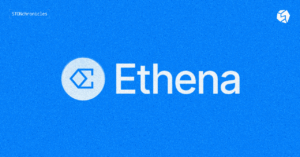Mining forms the backbone of the entire blockchain framework, allowing transactions to be processed and hashed in the decentralized ledger. As a rule, the transactions are processed by miners, or node operators, who have a vested economic interest in supporting the operability of the network. The miners receive rewards for their efforts in the form of native blockchain coins, which can later be sold, as are Ethereum, Bitcoin, and many others.
Though the period between 2022 to 2023 has seen a considerable drop in blockchain activity overall, with the slump in crypto trading, mining remains a viable and attractive form earning cryptocurrencies. The given material will explore some of the most attractive types of mining available in 2023.
Solo Mining
The original form of mining, which involves an individual installing a mining rig in their homes or in other premises. The equipment must be maintained and cooled to make sure it has sufficient power to process transactions. Solo mining is the least attractive form of mining, since it requires a large amount of initial investment and considerable technical knowledge. The energy consumption and equipment upkeep costs are also high, while competition with larger mining farms further reduce the profitability of solo mining.
Pool Mining
The given type of mining involves several small home miners banding together to pool their combined computational resources in order to increase processing power and become more competitive. The pool mining approach usually sees the construction of a large mining rig composed of ASICs cards contributed by the participating miners. Once the mining farm is operational, the proceeds extracted from successful transaction processing are distributed equally among the members of the pool.
Pool mining is seen as a viable alternative to home mining and is much less expensive, since the combined know-how and financial resources of the participants can even out the costs associated with the maintenance of the mining farm.
Remote Mining
A very popular type of mining that is prominent among investors who wish to get access to cryptocurrencies, but do not have either the time or desire to maintain a mining farm, or do not have the necessary technical knowledge to do so. In order to cater to the demands of such investors, a number of companies have launched so-called cloud mining farms – industrial size crypto mining rigs installed in warehouses or other premises.
Access to the computational power of the mining rigs is sold in the form of flexible contracts. The investors can buy these contracts for a certain amount of money and for a certain period of time, during which they will receive proceeds in the form of cryptocurrencies mined by the cloud farming pool.
Multipools
The development of cloud mining, though profitable, has left many investors disappointed by virtue of a simple fact of the cryptocurrency market – volatility. The ongoing instability of cryptocurrency prices, which can vary significantly over a short period of time, means that it is not always profitable to keep mining a single coin.
As a result, in order to counter the given shortcoming of the cryptocurrency industry, mining farms have started applying a new approach, which makes the activity of mining profitable on an ongoing basis. The multipool is the result of a combination of remote mining and algorithmic analysis of the cryptocurrency market’s exchange rates in real time. The underlying principle of multipool mining is the same as with cloud mining, however, instead of mining a single asset, the participants get access to continued and consistent returns via constant shifting of mining of one altcoin to another based on their current market prices.
Multipools apply a variety of algorithms to keep track of the price performance of a range of altcoins and coins and automatically switch from mining one to another, depending on their market dynamics. Such an approach makes multipools far more attractive than home mining or pool mining.
The core principle of multipool mining is based on taking into account two main factors – the block time and the current price of altcoins on market exchanges. By combining and comparing the two factors, the algorithm singles out which coin can bring the most profit at any given time interval and switches the mining rig to extracting that asset.





